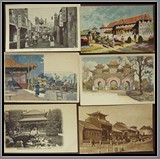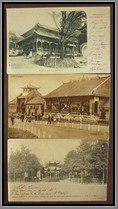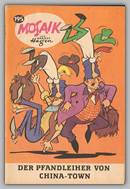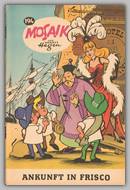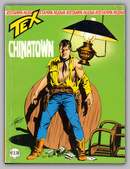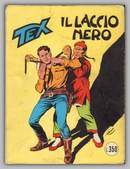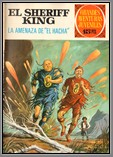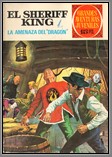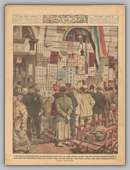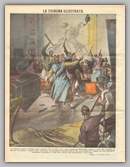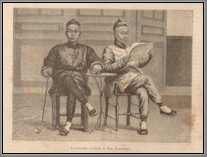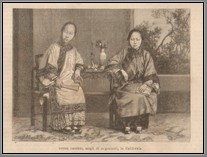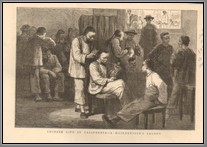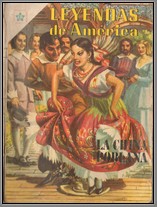I thought it would be of interest to put together a set of manuscripts that tell the story of Chinese colonos in Cuba. (Note: these files are all relating to different people, not the same person)
Authorization to allow 3000 Chinese settlers to come to Cuba: http://www.historyrevealed.eu/the-americas-new/cuba-and-puerto-rico/12851-communication-from-the-captain-general-cup367.html
Extremely rare ship manifest listing each Chinese being shipped to Cuba. An extremely rare item: http://www.historyrevealed.eu/the-americas-new/cuba-and-puerto-rico/10812-original-and-complete-1868-chinese-ship-manifest-cup086.html
In rare cases Chinese would be imported without authorization: https://www.historyrevealed.eu/the-americas-new/cuba-and-puerto-rico/12850-citation-of-the-general-captain-cup366.html
This is an extremely rare item. As the Chinese were setting foot on Cuban soil there were detailed records kept for each person......even showing the Chinese name they had and the Spanish name they were given: http://www.historyrevealed.eu/the-americas-new/cuba-and-puerto-rico/11582-this-is-one-of-the-earliest-charts-cup194.html
Claim from the “Colonizing Agency” for payment for bringing 14 Chinese to Cuba to work in the quarries: https://www.historyrevealed.eu/the-americas-new/cuba-and-puerto-rico/12836-document-dated-in-havana-cup352.html
Then he had to register with the Chinese consulate in Havana: http://www.historyrevealed.eu/the-americas-new/cuba-and-puerto-rico/13339-certificate-of-nationality-of-one-asian-cup448.html
Before getting his ID card he had to swear to uphold the laws of Cuba: https://www.historyrevealed.eu/the-americas-new/cuba-and-puerto-rico/11754-affidavit-of-an-asian-cup245.html
He also had to swear to the police as to his profession back in Macao: https://www.historyrevealed.eu/the-americas-new/cuba-and-puerto-rico/12915-asian-1872-profession-relative-cup392.html
He was issued an ID card: https://www.historyrevealed.eu/the-americas-new/cuba-and-puerto-rico/13348-identity-card-for-foreigners-cup457.html
If he did not have his ID card with him he had problems: https://www.historyrevealed.eu/the-americas-new/cuba-and-puerto-rico/13352-a-chinese-is-explaining-why-he-does-not-have-a-pass-cup461.html
At times he would escape: https://www.historyrevealed.eu/the-americas-new/cuba-and-puerto-rico/13350-one-asian-was-out-of-the-deposit-cup459.html
Then he had to undertake a contract for work...........spelling out in details what kind of food, clothing, etc he would be entitled to: http://www.historyrevealed.eu/the-americas-new/cuba-and-puerto-rico/13224-1872-work-contract-for-a-chinese-colono-cup439.html
In rare cases the work contract was in Chinese: https://www.historyrevealed.eu/the-americas-new/cuba-and-puerto-rico/13185-1871-chinese-contract-cup425.html
He had to be paid: https://www.historyrevealed.eu/the-americas-new/cuba-and-puerto-rico/12927-cuba-slavery-pagare-cup404.html
In some cases he was rented out: https://www.historyrevealed.eu/the-americas-new/cuba-and-puerto-rico/12613-pagar-for-the-rent-cup335.html
Then he would recontract again and needed to get a reference letter: http://www.historyrevealed.eu/the-americas-new/cuba-and-puerto-rico/11743-character-reference-for-an-asian-cup234.html
The owner had to request permission to the court to recontract a colono. This he would do for a number of them at one time: https://www.historyrevealed.eu/the-americas-new/cuba-and-puerto-rico/13345-permission-to-recontract-nine-asians-cup454.html
The recontract was a different form than the one used for his initial contract: http://www.historyrevealed.eu/the-americas-new/cuba-and-puerto-rico/13361-extend-hiring-of-a-chinese-worker-cup470.html
Eventually he wanted to gain his freedom and apply for permanent residency: https://www.historyrevealed.eu/the-americas-new/cuba-and-puerto-rico/11751-early-request-by-an-asian-for-residency-cup242.html
To gain his eventual freedom he had to furnish a baptism certificate: https://www.historyrevealed.eu/the-americas-new/cuba-and-puerto-rico/12916-asian-1874-i-beg-you-cup393.html
Sometimes that birth certificate could not be located: https://www.historyrevealed.eu/the-americas-new/cuba-and-puerto-rico/12910-asian-1876-the-yllmo-cup387.html
Often he ran into problems with the law for various offences and a police report was filed: https://www.historyrevealed.eu/the-americas-new/cuba-and-puerto-rico/12901-police-headquarters-of-matanzas-cup378.html
When he died there were documents from the hospital: http://www.historyrevealed.eu/the-americas-new/cuba-and-puerto-rico/12621-1888-death-notice-of-a-native-cup343.html
At times, the death would be questioned: https://www.historyrevealed.eu/the-americas-new/cuba-and-puerto-rico/13220-interesting-court-file-on-the-life-of-a-chinese-colono-cup435.html
BONUS ITEM: Cuban Chinese Masonic warrant card: https://www.historyrevealed.eu/the-americas-new/cuba-and-puerto-rico/10813-this-is-a-1960-warrant-card-cup087.html
Price: $17030.00

